- Home
- slideshows
- miscellaneous
- Forget about the Great Pyramids and the Sphinx: I spent a month in Egypt, and the most spectacular site I visited was the ancient city of Thebes
Forget about the Great Pyramids and the Sphinx: I spent a month in Egypt, and the most spectacular site I visited was the ancient city of Thebes
I got to Luxor in a roundabout way. I took a 12-hour overnight train from Cairo to Aswan, a town near the southern border of Egypt, and then meandered up the Nile on a multiple-day cruise to Luxor, stopping at various temples along the way. The vistas along the Nile were spectacular.

The cruise arrived at Luxor in the middle of the night. As it is for many, my introduction to the area was a hot-air balloon ride as the sun was rising. We were packed thirty to a basket as the sky was colored in pastel purples and pinks.

As we rose over the city, I got glimpses of many of Luxor's ancient sites. Luxor is often called "the world's greatest open-air museum." When you see 60-foot granite statues, colonnades, and sprawling temple complexes beneath you, the moniker makes sense.
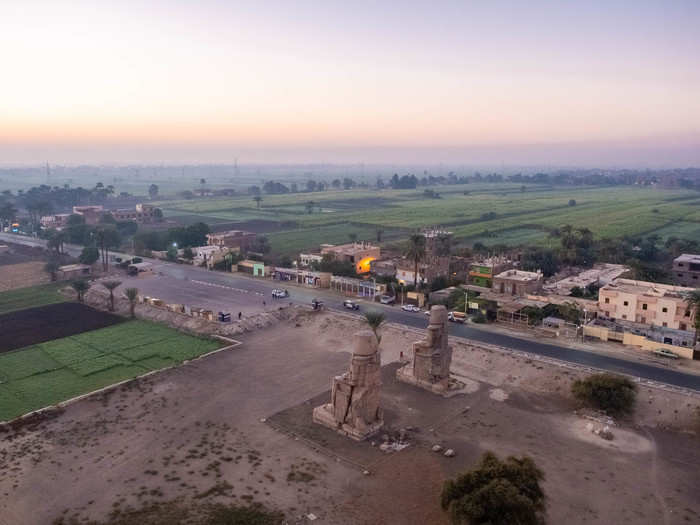
My hot-air balloon driver had a cheeky sense of humor, telling us repeatedly that it was his first time flying a balloon — not exactly what you want to hear as you float in a contraption invented in the 1700s and largely unchanged since.

The sun peeked out over the horizon as we floated above the fields of sugarcane, sporadic date palms, and reeds that distinguish the farming villages that surround Luxor.
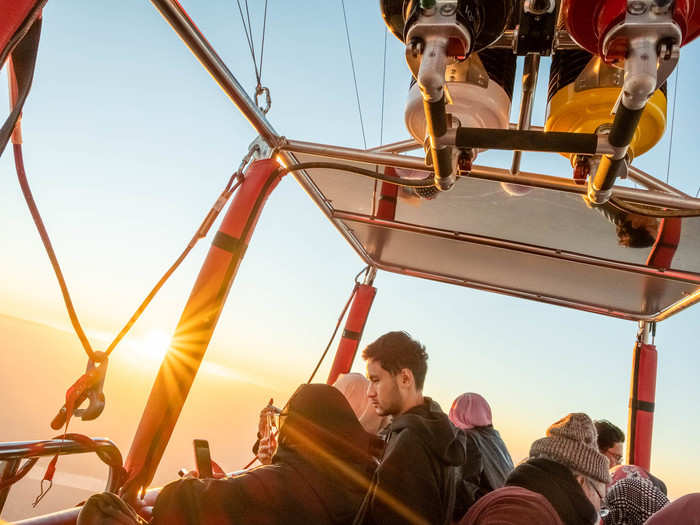
From the hot air balloon, I spotted the mortuary temple of Ramesses III at Medinet Habu. It's most famous for the inscribed relief paintings inside depicting Ramesses III's defeat of the so-called "Sea Peoples."
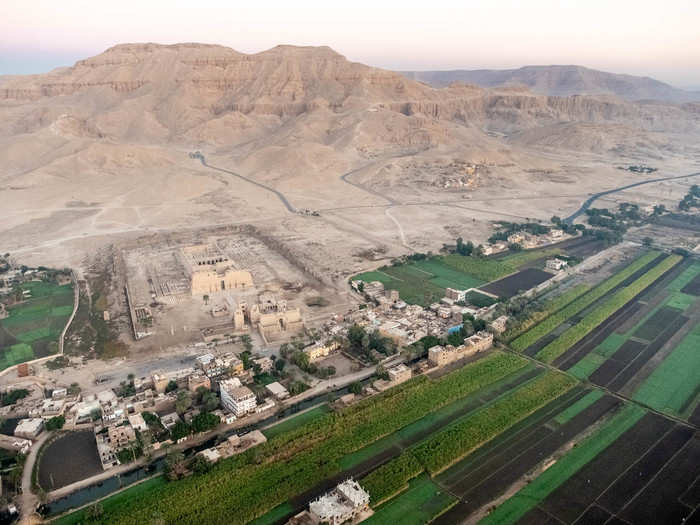
Source: Ancient Egypt Online
It was a quick ride. Before I knew it, we were drifting to the ground.
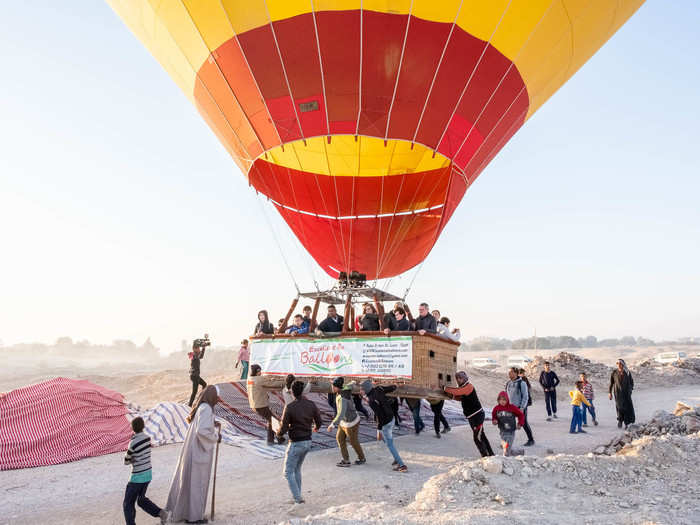
Watching the balloon team deflate the hot air balloon was a sight unto itself.
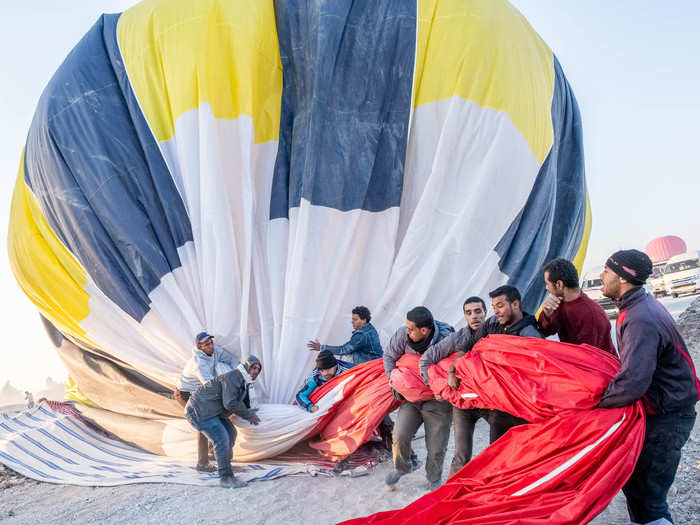
After the balloon ride, it was time to head to the West Bank of the Nile. The ancient city of Thebes was divided in half by the river. The east side, where the sun rises, was where people lived. The west side, where the sun sets, was where people buried their dead.
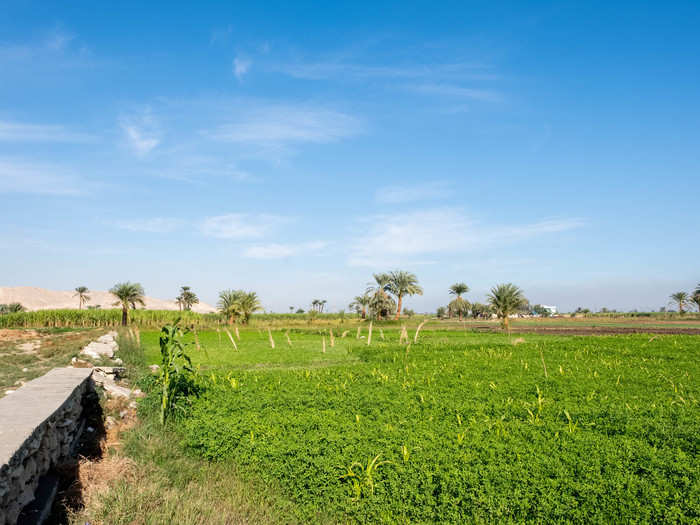
Our first sight was the Valley of the Queens. Built into a gorge, the site was once a burial site for queens and royal children. There are more than 90 tombs cut into the valley. Each one consists of an ornately decorated passageway and a room for sarcophagi and offerings. Seeing the most famous tomb, the richly painted tomb of Nefertari, costs nearly $60 alone.

My guide said that he took us to the Valley of the Queens first so that we could work our way up to the Valley of the Kings, where the tombs are even larger and more richly decorated. The landscape looks more or less the same.

There are 63 royal tombs, but only 18 are open each day to the public. A ticket, which runs about $8, gets you access to three tombs. That ticket doesn't include access to the most famous tomb, that of Tutankhamun, but my guide told me that while King Tut's tomb is famous because of how it was discovered, it's not particularly special inside. He recommended we start with Ramesses III.
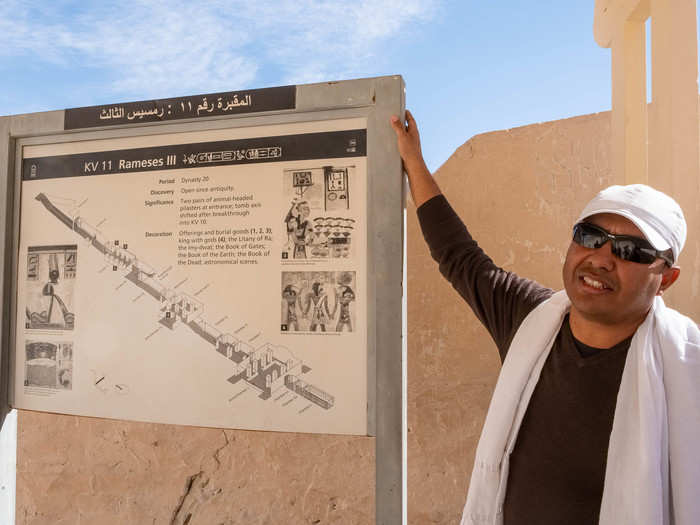
Taking photos inside the tombs is a major no-no unless you pay for an extra ticket that costs $17. And lest you try to be sneaky about it, there are guards in each tomb waiting for you to break the rule.
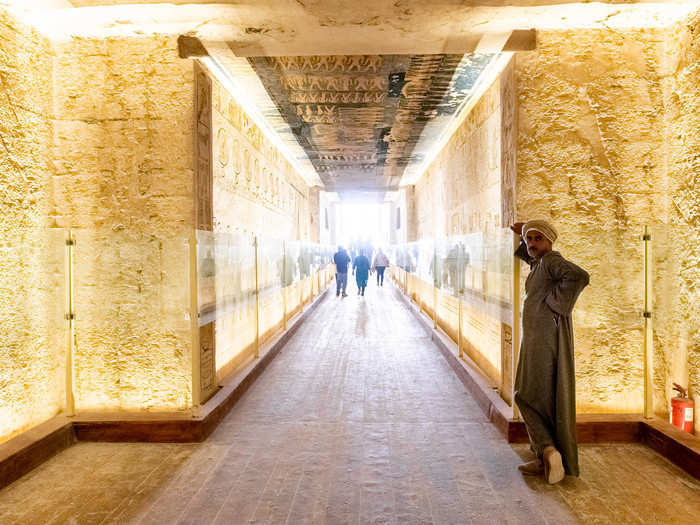
Each tomb roughly follows the same structure. A team of artisans would cut a narrow descending passageway into the limestone rock of the valley. There are typically various rooms off of the passageway with offerings for the afterlife and even fake passageways to trick robbers.
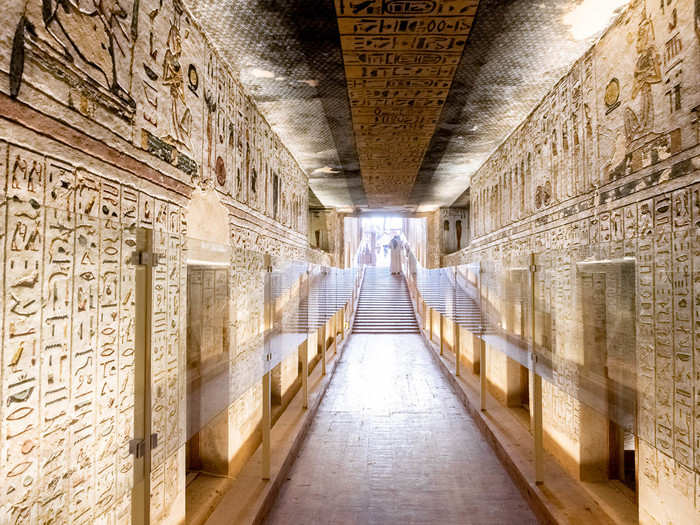
Source: Encyclopedia Britannica
Artisans would carve and paint elaborate scenes into the walls, often depicting the pharaoh whose tomb it was alongside various gods, particularly those that ruled the underworld.
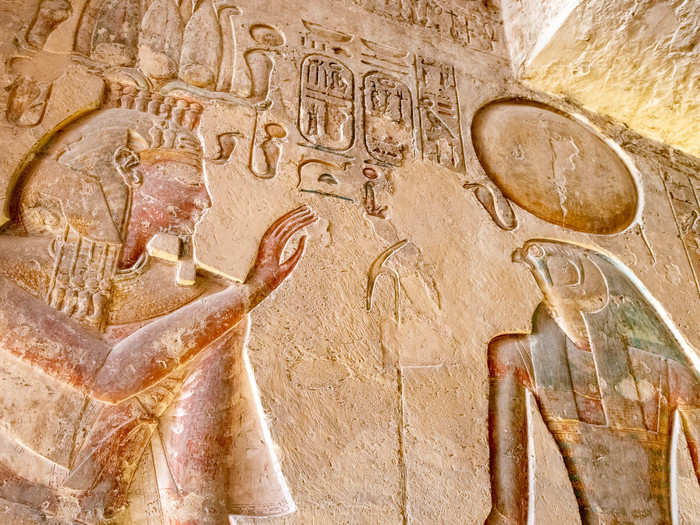
The ceilings often had paintings of planets and constellations or depictions of solar boats, giant barges intended to carry the Pharaoh with the sun god Ra across the sky to the afterlife.
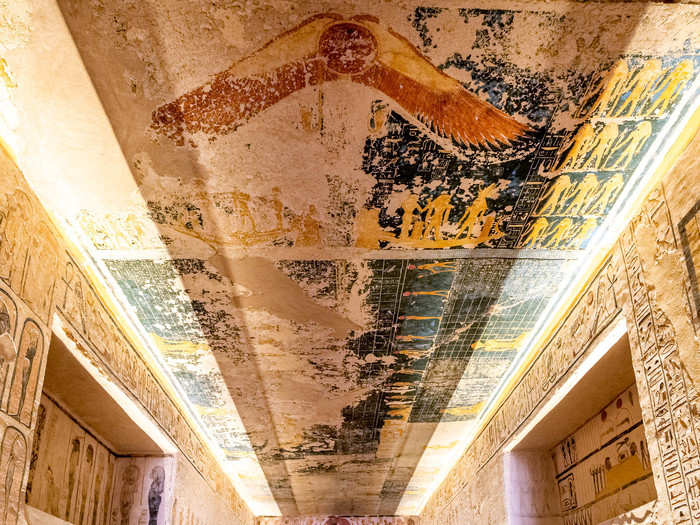
The original name of the Valley of the Kings was "The Great and Majestic Necropolis of the Millions of Years of the Pharaoh, Life, Strength, Health in The West of Thebes." What a mouthful.
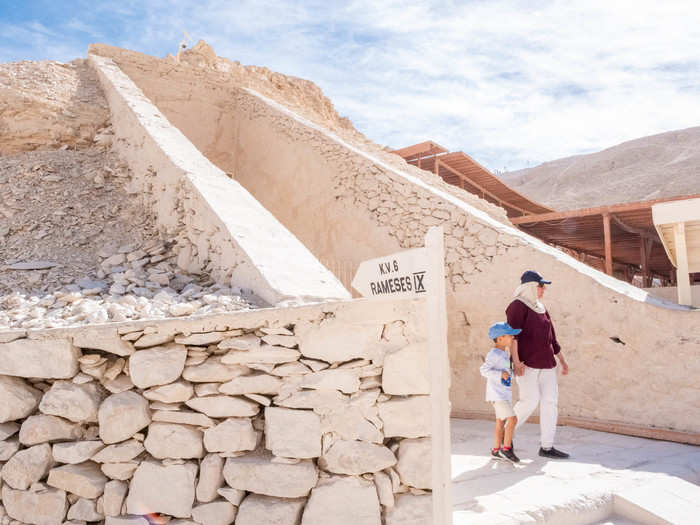
Nearly all of the tombs had been completely robbed by the end of antiquity. The tombs were popular tourist attractions in Greek and Roman times. There is considerable graffiti on the walls of many tombs from those times, as well as from Coptic Christians monks.
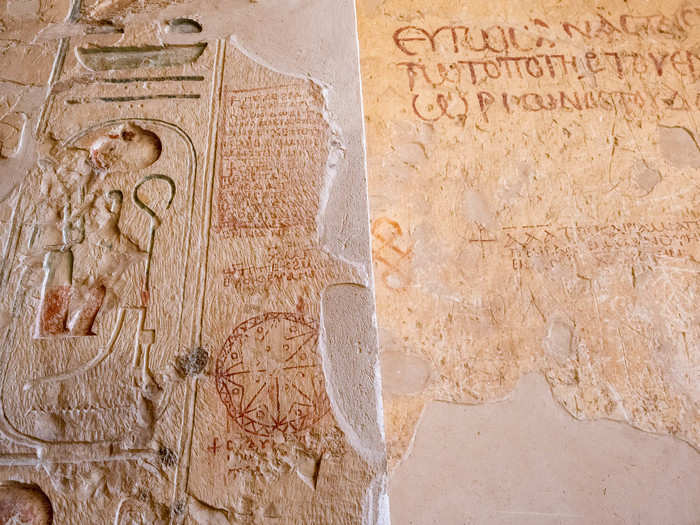
My guide saved the best tomb for last, that of Ramesses IV. The tomb is one of the largest and most richly decorated. The ceiling is covered in paintings of birds and hieroglyphs.
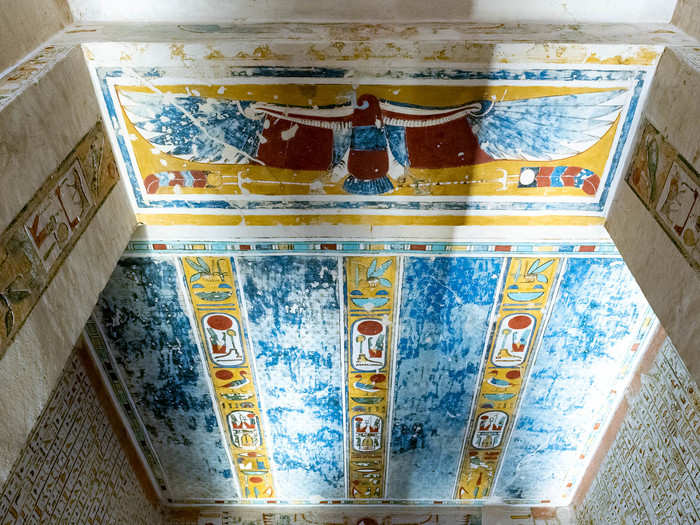
One of the most fascinating bits my guide told me is that the artisans of the tombs began working on a new tomb as soon as a pharaoh died. They would work on that new tomb until the end of the new pharaoh's reign. Therefore the largest, deepest, and most richly decorated tombs are typically those of pharaohs who ruled for a long time.

Like all the tombs, the tomb of Ramesses IV ends with a burial chamber. Unlike many of the other tombs, the sarcophagus still resides in the tomb.
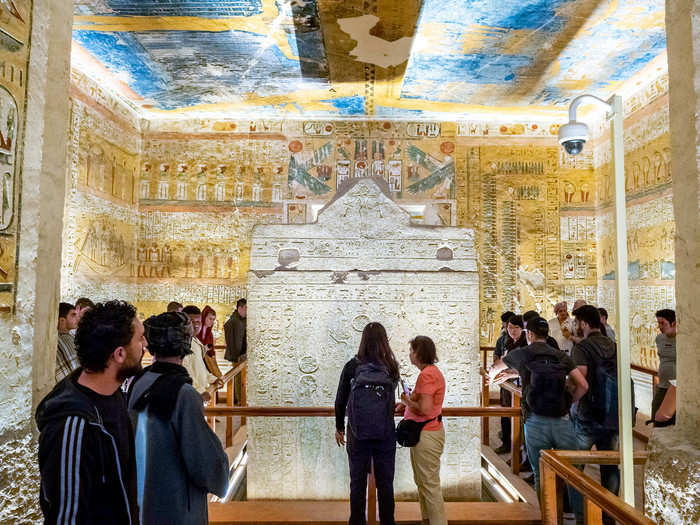
Above Ramesses IV's sarcophagus is one of the most famous paintings in all of the tombs. This painting shows Nut, the goddess of the sky and the afterlife, depicted as a star-covered naked woman. She is arched above Geb, her brother and husband and the god of the earth.
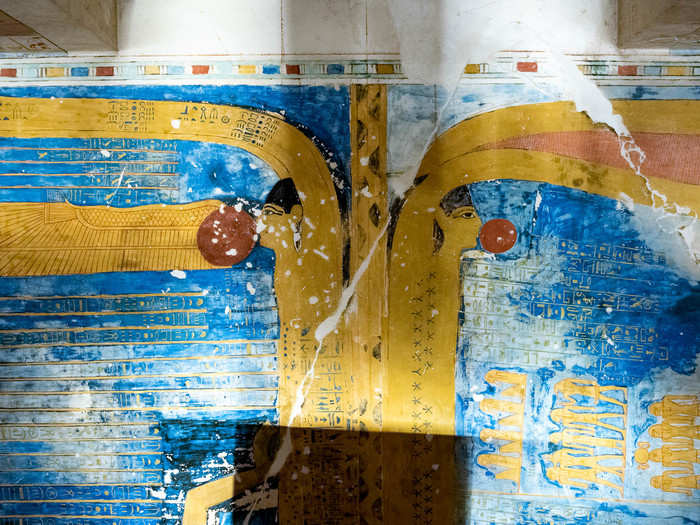
Source: The Keep
As I only had two days to see Luxor, I had to move on from the Valley of the Kings. My next stop was the Temple of Hatshepsut at Dayr al-Baḥri. Hatshepsut was the longest ruling female pharaoh, having taken the throne after the death of her husband. Her rule was prosperous, as evidenced by this impressive temple.
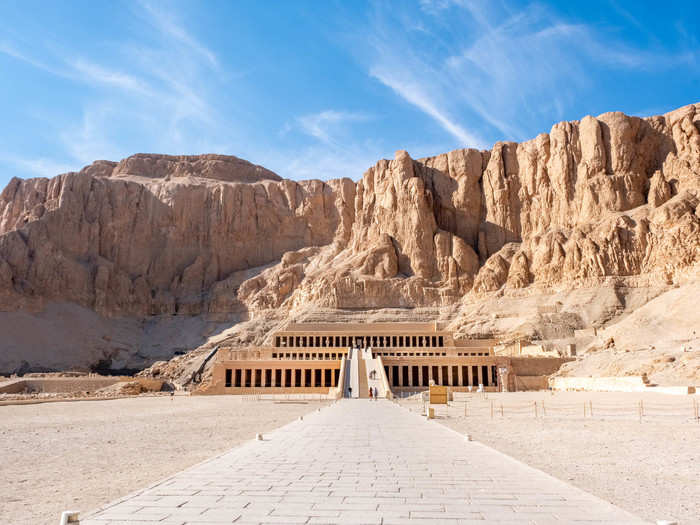
Source: Biography.com
Hatshepsut typically depicted herself dressed in the garb of a male pharaoh, wearing the typical royal headdress, fake beard, and kilt. She ruled for 20 years.
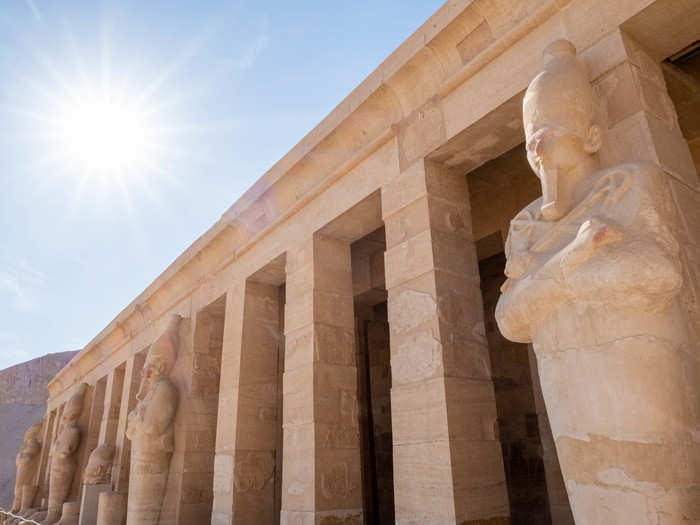
The temple is made of a series of colonnades and courts on three separate levels situated around a tall ramp. Each part is dedicated to a different god.
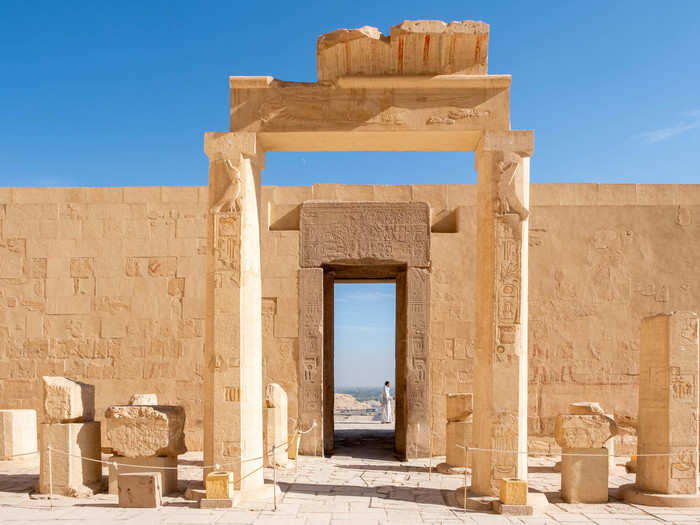
Our last stop of the day was the Colossi of Memnon. The Colossi, which stand about 70 feet tall, were once part of the mortuary temple of Amenhotep III, which many believe to have been the most elaborate temple of all Thebes history. The massive colossi are said to have inspired Percy Bysshe Shelley to write the poem "Ozymandias."
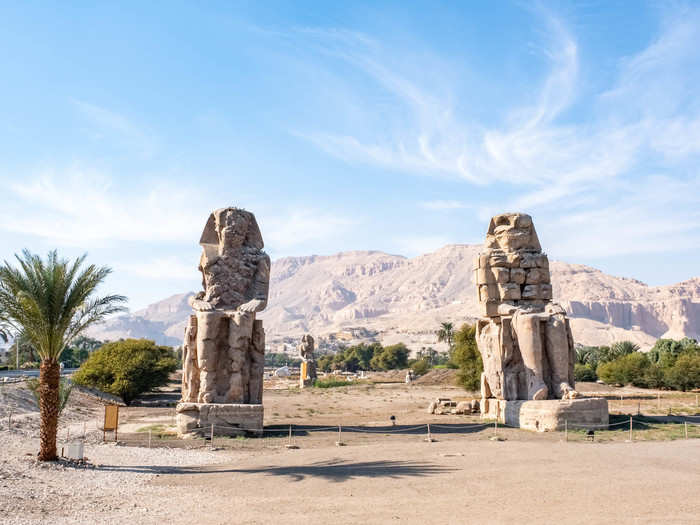
Source: Poetry Foundation
I rose early the next day to see the Temple of Karnak, considered by many to be the largest temple complex in Egypt and one of the largest in the world. The entrance to the complex is an avenue of sphinxes which once extended all the way to the Temple of Luxor two miles away.
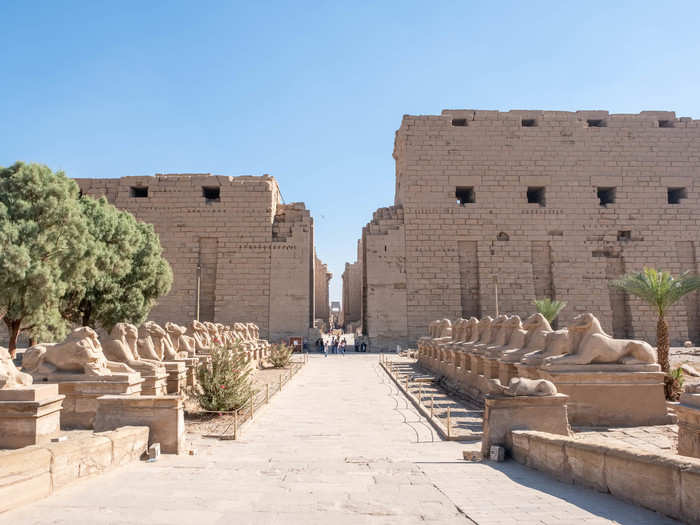
The main feature of the temple complex is the hypostyle hall, a series of a 134 70-foot and 40-foot columns that are absolutely massive. It covers an area of 54,000 square feet.
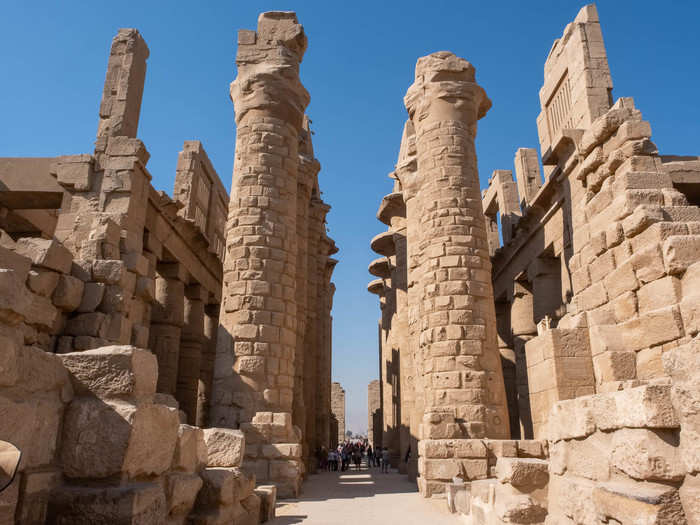
Source: Encyclopedia Britannica
I'm not kidding. The columns are huge, and each column is inscribed with reliefs depicting the pharaoh Seti along with his various exploits protecting Egypt and defeating his enemies.
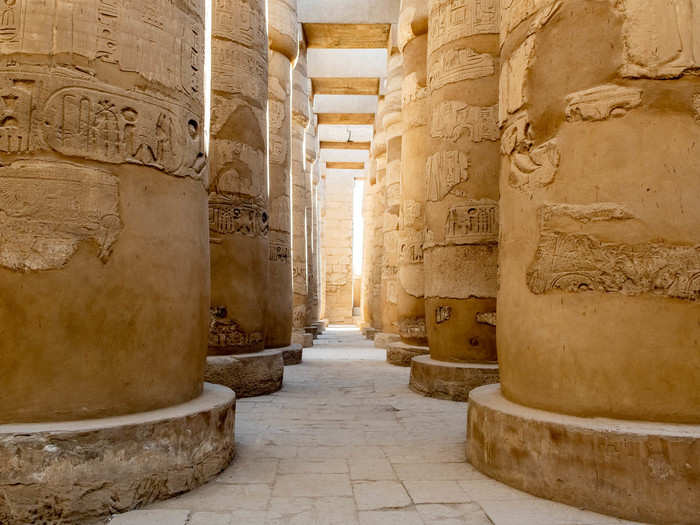
Source: University of Memphis
There are reliefs and decorations everywhere, even on the ceiling beams of the hall.
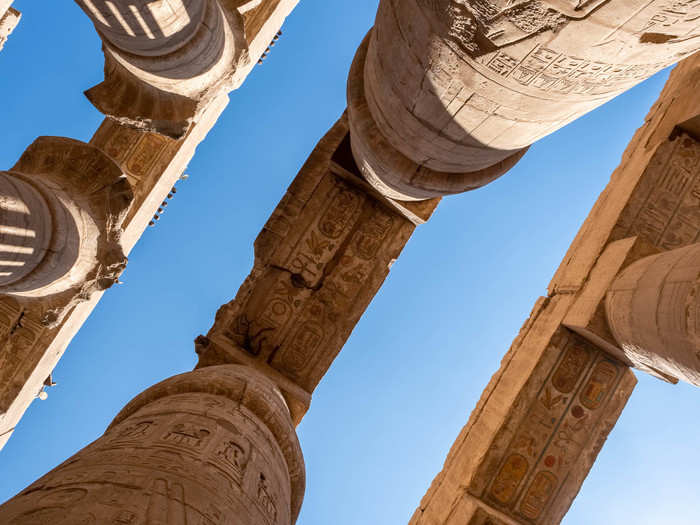
The temple, once called Ipet-isut, or "The Most Selected of Places," was the main Theban place of worship. It was constructed continuously over the course of 2,000 years, with each successive pharaoh adding to or changing the complex.
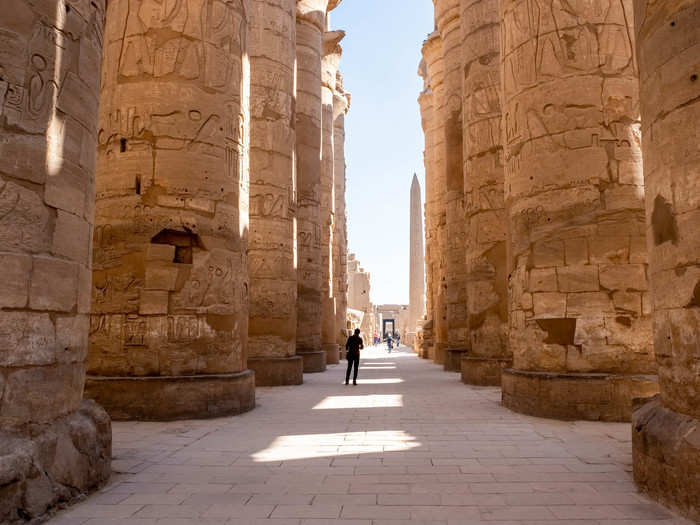
Source: LiveScience
There are temples, sanctuaries, and obelisks built by different pharaohs, nobles, and royals spreading out from the main hypostyle hall.

One of the most popular things to do for visitors both present and past is to circle the statue of the scarab beetle, which is said to be good luck, as scarabs were a sign of immortality in Egypt.
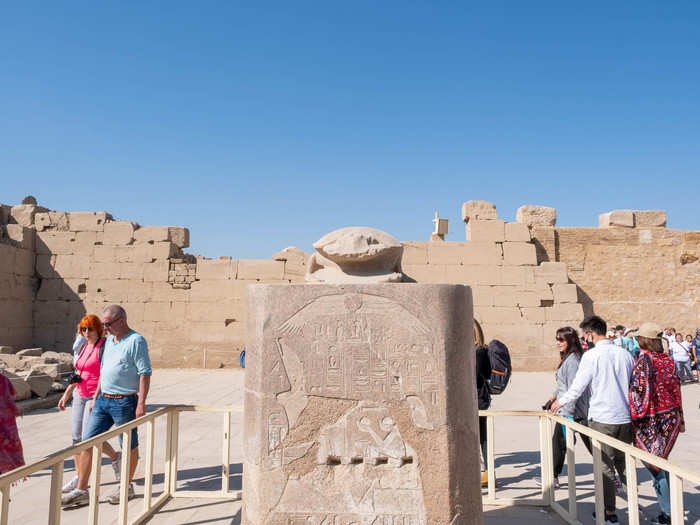
Source: NileScribes
As I exited the hypostyle hall, I got an excellent view of the two primary obelisks still standing in the complex. The obelisks, which were once topped with gold, signified the "primordial mound" upon which the creator god stood at the creation of the world.
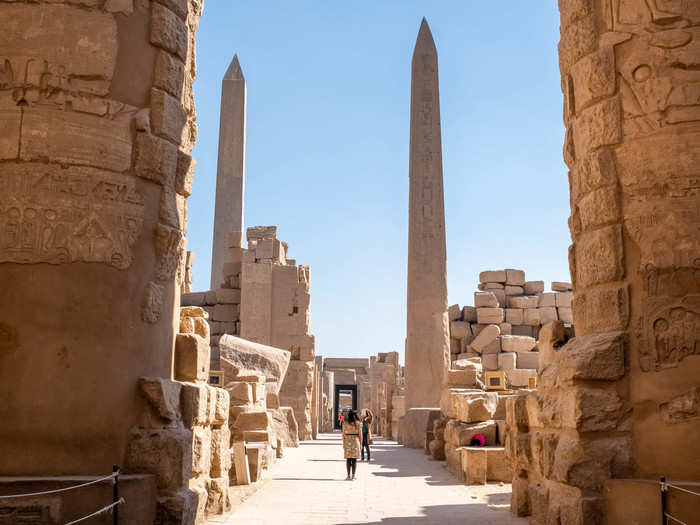
Source: Ancient
While pharaohs would often demolish the statues or buildings of rules that came before them, this large statue still stands in the complex.
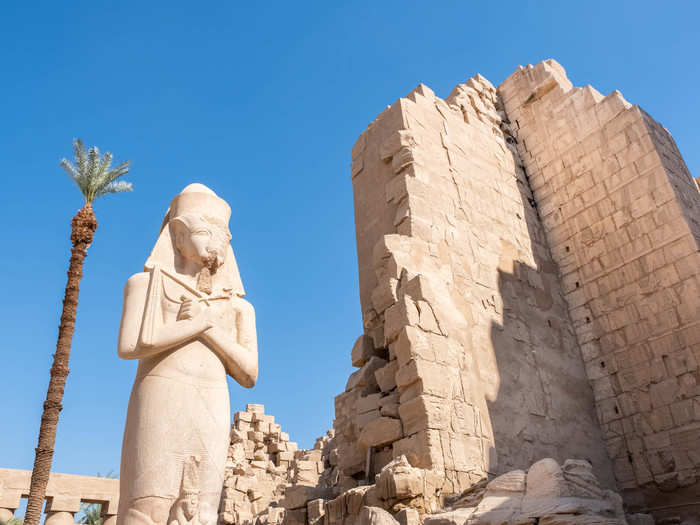
My last stop in Luxor was the Temple of Luxor. It's far from the last thing to see in the city or in the ancient ruins of Thebes. I, like most visitors, just ran out of time. Unlike most of the other monuments and ruins, the Temple of Luxor is directly in the center of the new city.
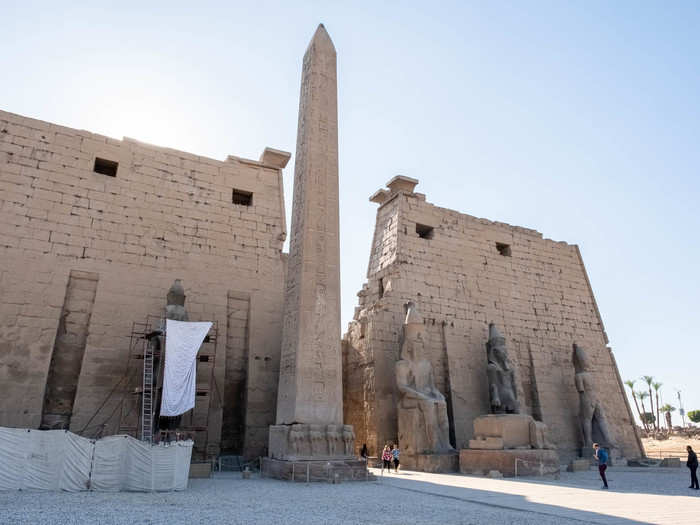
The temple was primarily built by pharaohs Amenhotep III and Ramesses II. Ramesses II is depicted in two giant statues that flank the entrance to the temple.
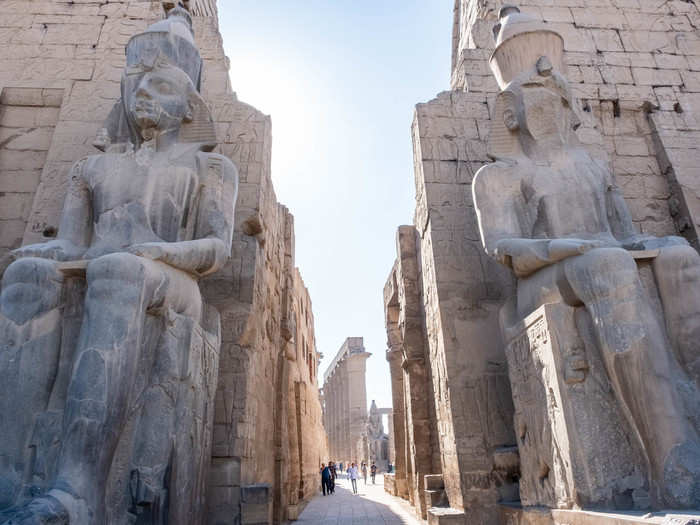
The first part of the temple consists of a colonnade on one side and a court. A mosque was built on top of the court sometime between 909 and 1171 C.E. and has been used ever since.
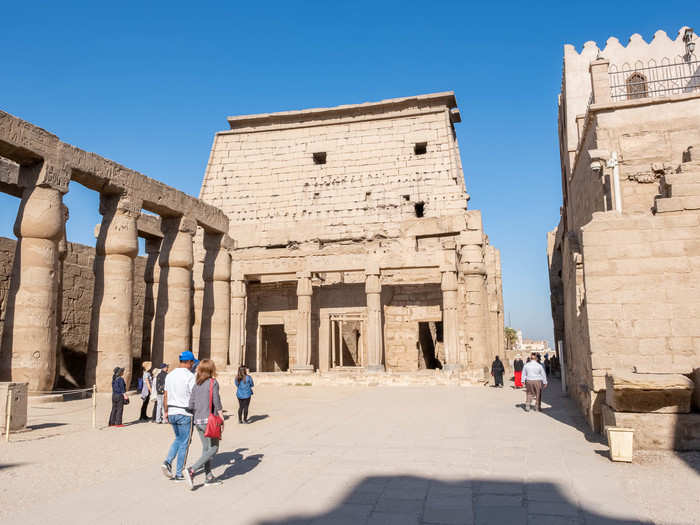
The temple is believed to be the oldest building purpose-built and continuously used as a place of worship to the gods. The hypostyle hall, though not as large as the one in the Temple of Karnak, was once converted into a Christian church.
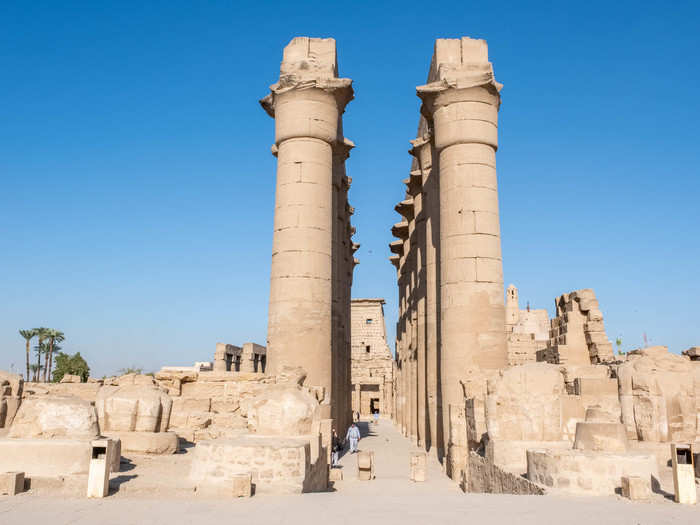
Source: Encyclopedia Britannica
It, like all of Thebes, leaves you in a state of awe. While sites like the Pyramids of Giza remain on the tourist trail, even as tourism to Egypt plummets, the sites in Luxor remain far less visited. When I visited in peak season, I practically had the Temple of Luxor all to myself.

Source: Encyclopedia Britannica
After spending two days in Luxor, I found myself yearning to not go back to Cairo.
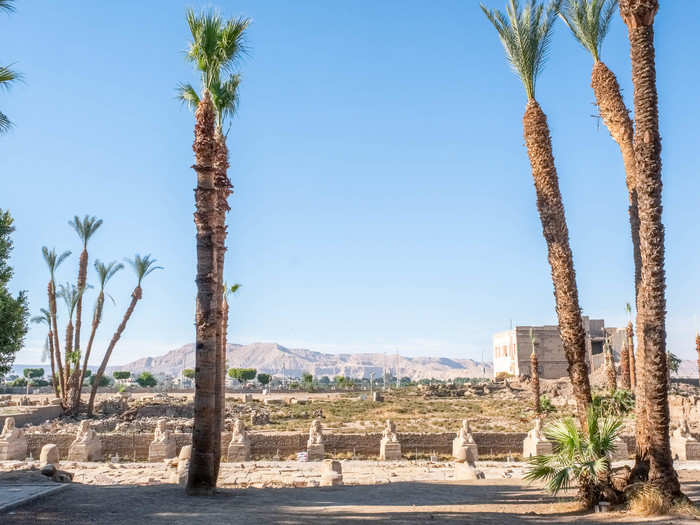
Instead, I found myself wishing for another few days in the town to explore the various temples and ancient wonders I had yet to see.
Luxor, along with its Theban sites, was designated as a UNESCO World Heritage site in 1979. While the Pyramids get all the glory (and are a fantastic sight in their own right), I found the ruins of Thebes left a much deeper impression.
Source: UNESCO
Popular Right Now
Popular Keywords
Advertisement